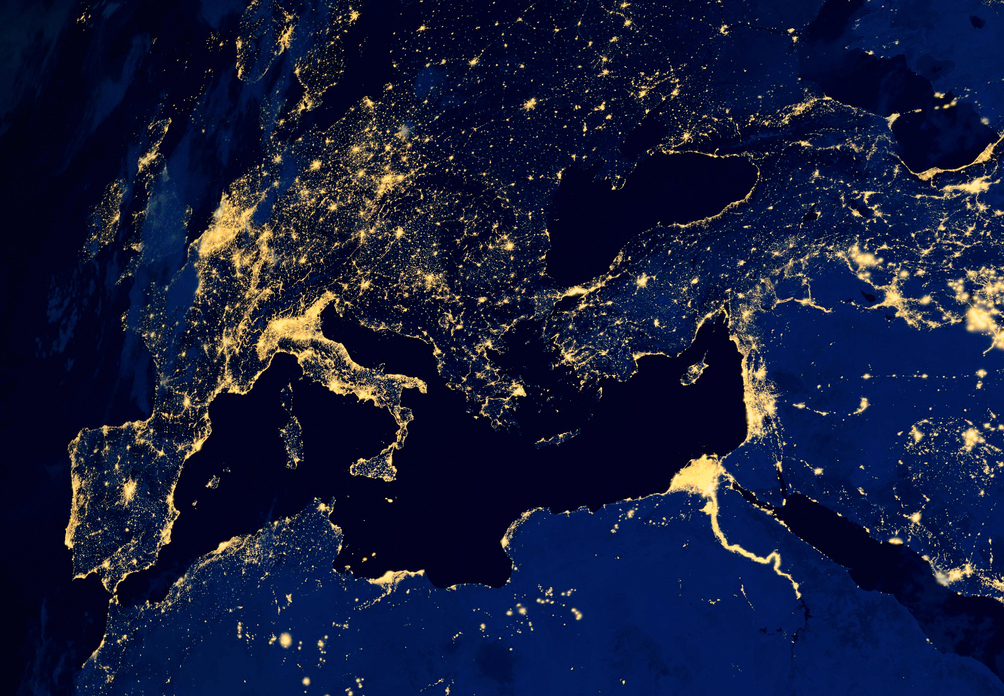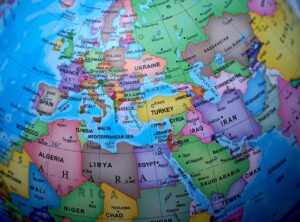The European Commission recently presented in Brussels the fifth list of Projects of Common Interest (PCI), which includes key infrastructural projects considered essential for completing the European internal energy market for achieving the Union’s energy and climate policy objectives. As emphasized by the European Union’s Energy Commissioner, Kadri Simson, this latest revision is perhaps the most significant proposal to date, centering modernization and integration of energy systems, in line with the decarbonization goals of the European Green Deal.
During the conference, an agreement for €300 million grant was signed by the Connecting Europe Facility (CEF) to be allocated to the ELMED-TUNITA project. The development of the project involves the construction of an electricity cable between Italy and Tunisia, developed by TERNA and the Tunisian company STEG, and it is expected to be completed by 2028. The grant agreement marks the first time the CEF finances an infrastructural project between a EU member state and a partner country, and shows the growing attention towards the Mediterranean region and its role in the energy transition.
In order to meet European decarbonization goals and to support the energy transition toward a European system based on renewable sources, the Mediterranean region will play a crucial role. A decarbonized Europe is unlikely to materialize without a decarbonized Mediterranean region. The ongoing electrification of final consumption (consider the spread of heat pumps in buildings or electric vehicles in transportation) will lead to a shift in European energy demand in the coming years, where electricity will increase its contribution at the expense of gas and oil, as described by the International Energy Agency (IEA) in its latest World Energy Outlook.
In this scenario, the Mediterranean region, including both Southern European countries and the North African region, with its high potential for solar and wind energy, could become a renewable platform for the production and exchange of electricity, supporting the regional energy transition.
The ELMED-TUNITA project is just one of the projects that in the short term can interconnect the Mediterranean region. The Med-TSO, an organization that brings together 17 national operators in the region since 2013, envisions in its Masterplan 2030 the expansion of the European electricity grid southward and eastward, creating a Trans-Mediterranean Electricity Market, and analyzes the feasibility of 19 new electricity interconnections in 16 countries in the region.
From the Italian perspective, the ELMED-TUNITA project represents a new phase in Euro-Mediterranean relations, in line with the beginning of a non-predatory partnership, theoretically represented by the Mattei Plan, as highlighted by Ambassador Verrecchia during the ceremony.
Current issues
The project of a Mediterranean electricity network is undoubtedly one of the most ambitious in the history of Euro-Mediterranean relations, especially in light of pursuing stability and security for the whole region. As early as 2009, the industrial consortium DESERTEC developed the masterplan ‘Desert Power 2050’, with the goal of harnessing the high solar radiation potential in the desert through solar thermal power plants in North Africa to export electricity to European consumption centers. The German-led DESERTEC consortium failed due to technological and political assumptions, but the issue of an integrated Mediterranean electricity network remains a strategic issue beyond past failures.
Since Desert Power 2050, the global energy landscape has changed. In light of the European decarbonization efforts of the European Green Deal, RePowerEU, and the Fit for 55 package, electricity networks in the Mediterranean space represent a strategic point for a sustainable and orderly energy transition. The development of a Mediterranean network can indeed be a starting point, offering economic, geopolitical, and social benefits resulting from infrastructural cohesion. The benefits of transnational and transregional electricity interconnections are well recognized. Network expansion to larger areas reduces costs and ensures greater reliability of energy supply. Cross-border networks can handle seasonal or daily variations, solving issues of periodic grid overload caused by production peaks and by regulating demand and supply. An integrated infrastructures would furthermore alleviate chronic energy shortages in some areas of the southern Mediterranean shore. According to a study of the European Network of Transmission System Operators (ENTSO-E), the body that coordinates European national operators, Spain could become a regional balancer by 2050: by exporting electricity during the summer months and importing it during the winter months it would help stabilize the entire Maghreb grid.
Currently, two high-voltage cables already connect Spain and Morocco, and the two countries trade electricity on the basis on bilateral commercial agreements. An additional expansion between the two countries will be operational by 2026, in addition to a second cable with a capacity of 1 GW between Morocco and Portugal. In the Eastern Mediterranean, two interconnection projects, EuroAfrica and EuroAsia, the latter also confirmed in the new PCI list, should connect Greece and Cyprus to Egypt and Israel, respectively. However, disputes over maritime borders’ sovereignty between Cyprus, Greece, and Turkey and the Turkish-Cypriot conflict could pose significant obstacles to the projects’ development. Another cable between Greece and Egypt, GREGY, is in its design phase and has also been included among the new PCIs. The GREEGY sub-marine cable extends over a thousand kilometers on the seabed between Egypt and Greece, with a capacity of 3000 MW. In this case, an agreement between Turkey and Libya on territorial waters in response to Turkey’s exclusion from the EastMed Gas Forum would secure Turkey’s sovereignty over the waters west of Crete and Rhodes and could complicate the project’s completion.
Despite these challenges, electricity projects for a Euro-Mediterranean network are already present, as demonstrated by the MED-TSO Master Plan. Infrastructure expansion is indeed necessary to ensure the realization of a decarbonized Euro-Mediterranean integrated system. One of the latest reports from the IEA emphasizes that the development of electrical networks is crucial for decarbonizing energy systems, warning that networks could become a bottleneck in the transition in the absence of adequate investments and regulatory frameworks. A delay in network development is equivalent to a delay in the decarbonization process, as it slows down the transition away from fossil fuels. The same view is shared by the industrial sector and by the European operators: the rapid expansion of renewables has not been followed by an equally rapid expansion of electrical infrastructure, which has created queues of projects waiting for connection to the grid.
In the Mediterranean region, despite the new PCIs, the integration process in terms of networks is still far from being achieved. Currently, three interconnected zones exist in the region:
- The synchronous region of continental Europe (CESA), coordinated by ENTSO-E on the mandate of the European Union, ensuring the balance of the entire European grid;
- In the western Mediterranean, the synchronous region of the Maghreb, including the North African countries of Morocco, Algeria, Tunisia, and Libya grouped under the COMELEC (the Maghreb Electricity Committee);
- In the Eastern Mediterranean, Turkey is connected to CESA through a cable with Greece (400kV) and two with Bulgaria (both 400kV).
Any interconnection project between these zones must consider substantial differences resulting from their historical development. Despite the existence of COMELEC, the electricity market in North Africa is not liberalized, and exchanges occur on the basis of mutual assistance. The case of Turkey is different. The country started its accession process to the European Union in 2005, became an observer country at the Energy Community in 2006, and was integrated as a synchronous region in 2015, with the national operator TEIAS currently an observer in ENTSO-E.
Towards a new energy cooperation
Yet, the complete implementation of the MED-TSO Master Plan, if achieved, would ensure greater energy security, enhanced technical exchanges between countries in the Euro-Mediterranean region, and structural collaboration to guarantee necessary political dialogue for the area’s stability. However, these projects must be approached taking into account both technical aspects and national development strategies.
From an technical point of view, significant legal and regulatory barriers exist between EU member countries, where national authorities operate under a common legislative framework (through supranational institutions like the Agency for the Cooperation of Energy Regulators (ACER)) and follow common policies, such as the TEN-E, that facilitates plans for integrating network infrastructures within the Union, and the countries on the southern shore, where the electricity market suffers from significant regulatory deficiencies.
Ideally, an interconnected Mediterranean system should also entail common climate targets on both shores to avoid distortions in terms of electricity prices. This is not currently the case. Despite almost all North African countries submitting Nationally Determined Contributions (NDCs) with commitments to reduce emissions and develop renewables within the framework of the Paris Agreement (the cumulative target for regional renewable capacity is about 80 GW by 2035), differences in ambitions and investments with Europe remain significant. This decarbonization target gap between the northern and southern shores would expose a hypothetical interconnected system to a dual risk. On one hand, the import of low-cost electricity from North Africa (which, in the absence of sufficient renewable capacity, would likely be based on fossil fuel production such as coal and natural gas, given the significant reserves in the area) could potentially circumvent European targets, such as the RED III Directive, which sets a 42.5% target for the share of renewables in final consumption. Theoretically, this risk is mitigated by the European Union’s Carbon Border Adjustment Mechanism (CBAM), in force in its transitional period since October of this year and set to take full effect in 2026.
On the other hand, an interconnected system based on renewables but with a capacity gap exposes the region with less installed capacity, North Africa in this case, to the risk of being unable to meet its internal demand through domestic production and having to resort to imports from Europe, with associated prices. However, CBAM itself could serve as a lever to accelerate the transition on the southern shore of the Mediterranean, currently slowed down by low domestic natural gas prices.
Greater cooperation within the MED-TSO is necessary to harmonize standards and minimum operability criteria. Unlocking the renewable potential in North Africa and the entire region depends not only on the ability to realize solar and wind projects but also on the flexibility of the system, i.e., measures implemented to integrate new sources into the grid. While Europe prepares to restructure the electrical infrastructure in view of the increasing contribution of renewables with a €584 billion investment, funds made available for cooperation beyond the Union’s borders remain insufficient.
Yet, financial instruments that can support this process exist. In addition to the aforementioned CEF and its role in the ELMED-TUNITA project, the European Fund for Strategic Investments, the European Bank for Reconstruction and Development, and the European Investment Bank can contribute to cross-border project investments. Ideally, a holistic development plan for a Mediterranean network should include both the implementation of network infrastructures as well as storage systems, batteries, pumped storage, and power-to-X systems. However, the realization of such infrastructure requires cultural changes, reforms, and the building of mutual trust between countries and cannot ignore a common vision of the energy transition as an opportunity for fair and shared development that respects both European decarbonization goals and the economic growth prospects of North African countries, ensuring that past failures serve as lessons for future energy cooperation.
Photo by gianlucamuscelli








